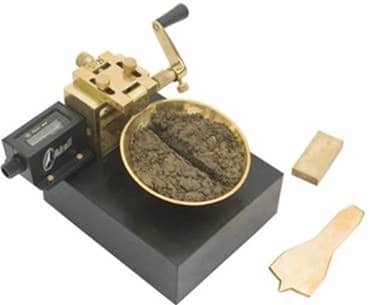
This test method is used as an integral part of several engineering classification systems (USCS, AASHTO, etc.) to characterize the fine-grained fractions of soils and to specify the fine-grained fraction of construction materials. A comparison of the liquid limit of a sample before and after oven-drying can, therefore, be used as a qualitative measure of the organic matter content of a soil. Weight the sample and record it with the number of drops on the test sheet as per below figure.The liquid limit of a soil containing substantial amounts of organic matter decreases dramatically when the soil is oven-dried before testing. Place the sampling in a numbered container. Remove a portion of the soil pat by using the spatula (approximately 10 to 15 gram) from the 13 mm closure. Repeat step 1 through step 3 until the proper closure is achieved at between 30 and 35 blows. Don't add more soil to help dry the sample back, adding dry soil will create an inconsistently mixed sample (from lack of curing), thus putting the accuracy of the test in question. In that case continue to mix the sample until it has sufficiently dried back. If sample requires fewer than 30 blows for proper closure, then the sample is too wet. If more than 35 drops are necessary to obtain the 13 mm closure, add more moisture and remix as described in step 1. If a closure of 13 mm is achieved at between 30 and 35 drops, proceed with step 4. So, the distance between them with the succession of beats is narrowed until they are applied to each other with a distance of 13 mm. Which makes the two divided soil parts flow to each other. 
The hand of the device is managed at a rate of two turns per second, which is the rate of knocking the plate on the base.

This tool makes the distance between the two sections about 3 mm and at the same times confirms that the thickness of the sample in the plate is exactly 1 cm. Part of the sample is placed in about one-third of the front of a plate using a spatula, level the soil pat to a thickness of 1 cm.Ī sample in the plate is divided into two parts using the grooving tool (there are two models for these tools, each arming for certain types of soil according to its viscosity). Mixing sample with around 3 to 5 ml and thoroughly mix by chopping, mixing, and kneading.

Remove from the container the soil to be used for the liquid limit test.







 0 kommentar(er)
0 kommentar(er)
